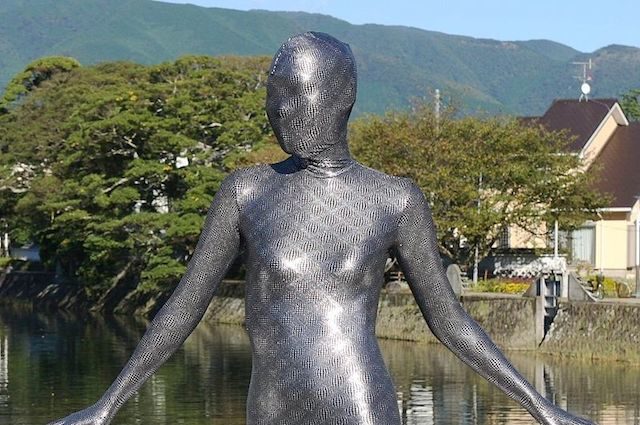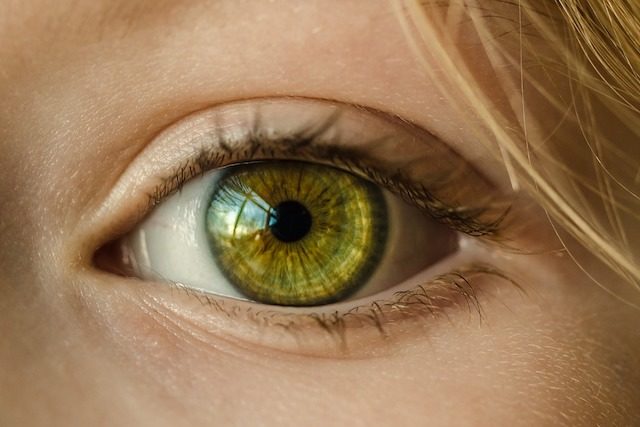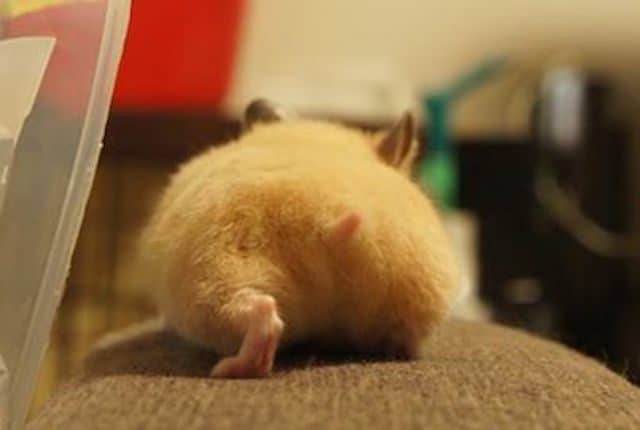When you ask Westerners about Japan, odds are they’ll come up with some peculiar stereotypes, generally involving things like Sailor Moon and maybe (OK, probably) some tentacles. Of course, not every stereotype is true. There are a lot of normal aspects to Japanese culture, and Japan in general is home to some incredible history and one of the most technologically advanced and financially robust populations in the world.
Then again, there’s a reason Westerners look a little sideways at the Japanese sometimes… and we have a feeling you might, too, when you read about some of their rather unorthodox obsessions…
10. “Yaeba” – Protruding Tooth
Your average American spends about $685 on dental care. Not all that surprising considering the media constantly reminds us of the virtues of oral hygiene with celebrities flaunting their expensive Hollywood smiles. Whereas we might go to the dentist to straighten crooked teeth, some Japanese women are embracing their crowded dentures. Called “yaeba,” women display their dental imperfections proudly with some even seeking professional help to create the look. There’s lots of different explanations as to why the yaeba craze has been so successful in Japan. Some suggest that it captures a girl’s youth; others argue it’s just another way that women change their appearance to conform to male standards.
While all of this might be enough to make a brace-wearing-teenager sigh in despair, in reality yaeba is a mostly harmless fashion trend that can be reversed as styles change. In fact, although yaeba may appeal to the younger crowd, older women are electing to get treatment to fix those imperfect teeth once and for all.
9. Zentai – Full Body Suits

A zentai suit, zentai meaning “whole” or “entire” in Japanese, is a skin-tight item of clothing that is usually associated with superheroes or an athlete’s uniform. All in all, that seems sensible and isn’t the sort of thing that people would think twice over. However, plunge a little deeper and you find a group of enthusiasts with different motives. For some these suits offer a sense of anonymity so often missing from everyday life; for others, it helps them find a place in society by hiding their outward appearance. There’s even those who find a sexual element to zentai suits, with one fan remarking how he liked to be touched and stroked by others.
This is one trend that is branching out of Japan into the West. The Zentai Project group, which is based in Britain, holds occasional walkouts where members go out in public taking pictures with amused tourists. So now you know that guy walking down the street isn’t just doing a bad imitation of Spider-Man, he’s a full blown Zentai suit practitioner.
8. Eyeball Licking

Aside from sounding incredibly unhygienic, eyeball licking is a supposed craze practiced in Japanese schools. Unusual at best, examples of this eccentric trend can be found on YouTube, comic books, and even in music videos. You might prefer a handshake, but some Japanese school children view eyeball licking as a sign of intimacy. Whether all of this is fact or fiction is a matter of debate. The Japanese website Naver Matome claims it’s a serious problem with a third of a classroom full of 12 year olds admitting to giving it a go. One teacher reported an increasing number of children suffering from styes along with students hiding their infections by wearing eyepatches. Tokyo-based writer Mark Schreiber, on the other hand, disagrees. Schreiber contacted two ophthalmological associations, an ophthalmologist, a professor and an organisation of school clinicians – all of whom had never heard of the practice.
This might be one we would like to think is an urban myth. After all, health experts have been quick to advise of the dangers of licking eyeballs: styes, conjunctivitis, ruptures to the cornea, ocular chlamydia and in extreme cases, blindness are some of the things you can look forward to. Either way it seems unlikely that this trend will spread across the Pacific.
7. 1873: The Year of the Rabbit

Rabbits: cute, furry, cuddly and nowhere to be seen on the Japanese islands before 1873. When rabbits were imported as curiosities, the Japanese people went crazy for the creatures. A rabbit back then could fetch amazing prices, with a single rabbit sometimes going for as much as $1000, but $400 to $500 being a more regular occurrence. The year 1874 saw the government put a capitation tax on rabbits, prices fell from dollars to cents and for rabbit gamblers the good times were over.
It’s important to stress that some people took this craze very seriously. One man spent everything he had on two rabbits only for them to die soon after. His daughter, taking pity on her father, sold herself to a brothel. With the money earned, she bought two more rabbits that also went on to die. Having had enough the man committed suicide; his daughter followed his example. This story baffled Australia’s the Launceston Examiner so much that they remarked: “Life is apparently cheap in Japan, since the value of two human lives seems to be equal to that of four rabbits!”
6. Byojaku

New fashion trends occur on an almost yearly basis in Japan. Some Japanese fashion is well known in the West with some trying to mimic the latest Tokyo trends. One of the more obscure fashion crazes in recent years is “Byojaku” or “Sickly Face” in English. Byojaku can trace its origins back to an April issue of Ranzuki – a Japanese fashion magazine. Since then, whether byojaku is a good or a bad thing has been a subject of curiosity for the Japanese media.
According to Japanese school girls, the byojaku look involves pale skin, worried brows and slightly flushed cheeks and lips. This is not to suggest that this craze is confined to schools. Mai Shiraishi, Kanna Hashimoto and AMO are all celebrities known for this look. So why are women choosing the byojaku style? It’s suggested that the look produces an unapproachable, damsel-in-distress message that asks people to protect them.
5. Japan’s Bagel Heads

For most people, all body modification means is getting your ears pierced or the odd tattoo. The more extreme practices of body medication, such as eyeball tattooing, are part of a fringe community which exists throughout the world. Japan, however, manages to take this unconventional subculture and add a unique twist. The bagel head look is achieved by injecting saline into the forehead while pressing your thumb down. Starting as long ago as 1999, the trend is still going strong and is surprisingly one of the tamer practices on the scene. For those that want to pursue something more outrageous: ear pointing, navel removal and amputation are all viable options. You might be wondering what any of those last three things entail. Well, ear pointing involves sharpening your ears to look like a cat. Naval removal is the literal removal of the navel from the body, and amputation is exactly what it sounds like with one practitioner suggesting the loss of a couple of fingers.
If you decide you’d rather just stick to injecting saline into your head, then prepare to spend some serious money. The bagel head look lasts for less than 24 hours, so you’ll need to keep forking out that hard-earned cash on saline to keep up the effect. There is some good news for the vain – the skin doesn’t sag no matter how many times you do it.
4. The Toilet Paper Craze of 1973

In 1973, Japan was almost caught with its pants down when toilet paper became the year’s must have item. An oil crisis and fears of a paper shortage led Japanese nationals to grab any paper they could get their hands on whether it be toilet paper, facial tissues, disposable diapers or sanitary napkins. One man in Shizuoka managed to get a hold of a thousand rolls of toilet paper, which is enough to last five years provided his family used four rolls a week. At the time, Japan imported oil to maintain a modern lifestyle. When the 1973 war in the Middle East threatened Japan’s supply of inexpensive oil, people panicked with demands for basic consumer items raising prices exponentially. In some parts of the country, the price of a roll of toilet paper more than doubled within a couple of weeks. It got so bad that people stole toilet paper from public buildings just to keep up supplies.
This isn’t something Japan just laughs off lightly. In 2014, the government fearing another scare, rolled out a public awareness campaign encouraging the stockpile of toilet paper and even the sale of specifically packed “emergency use” toilet tissue. One more reason not to grumble next time you reach out to an empty holder.
3. Hamuketsu – Hamster Bottoms

“Hamuketsu” is best described as a surreal mixture of the Japanese words for hamster and bottom. Bizarrely, more than 40,000 copies of photobooks dedicated to hamster bottoms have been sold. A Facebook page devoted to hamuketsu has thousands of fans uploading hundreds of pictures. To get an even bigger picture of how popular hamster butts are in Japan, we need look no further than the first book on the subject, Kawaisa-ni Monzetsu Hamuketsu, which featured 72 shots of photogenic hamsters. It was so popular that it outsold its originally printed 7,000 copies forcing a reprint.
It’s been said this is just another development of an aspect of Japanese culture known as kawaii, meaning “cute” or “adorable” in English. When asked about the trend, Takeshi Takahashi, spokesman at Hamuketsu’s publishers Basilico, explained: “The great thing about hamuketsu is that it is delightfully cute. I can’t stop smiling when I see these butts.”
2. Sea Bunnies
A genus of sea slugs native to the Pacific Ocean and found in the waters north of Japan, these nudibranchs and marine gastropods have become a Japanese internet phenomenon. Named “sea bunnies” for their rabbit-like appearance, some can grow up to 8 inches with “coats” and “ears” that some find cute. The fur-like coat is the result of bunches of tiny rods, named caryophyllidia, that cover the animal’s back. Arranged around knobs that are occasionally black, this gives the sea bunny its speckled appearance. Its “ears” are actually two antenna-like formations that are most likely sensory organs. Known under the scientific name rhinophores, they are used to sense chemicals in the water that help sea bunnies locate food and mates.
Sea bunnies can relax when it comes to natural predators, as they’re very toxic. So, although you’re safe to enjoy from a distance, touching them seems like a bad idea. Thankfully most people are content to just look at pictures. A webpage dedicated to the creatures has been shared nearly 10,000 times.
1. Kancho
“Kancho” is a popular prank where children sneak up on an unsuspecting victim only to poke one another with pointed fingers in the behind, yelling “kancho” at their hapless opponent. Aside from traumatizing a few English teachers, the prank is generally well received. Kancho isn’t necessarily encouraged in Japan, but children are seldom scolded for it. A popular source of ridicule online, sites such as Tofugu offer survival guides on how to protect your posterior from wayward children.
Common throughout Japan, kancho is a classic example of how two cultures can be so different. Whereas it would be more likely to spurn allegations of sexual abuse in the West, kancho is seen as mostly harmless fun in Japan. A trend that children will grow out of as they get older. We may have a lot in common, but there are some trends in Japan that manage to make even the most well-traveled gasp in amazement.